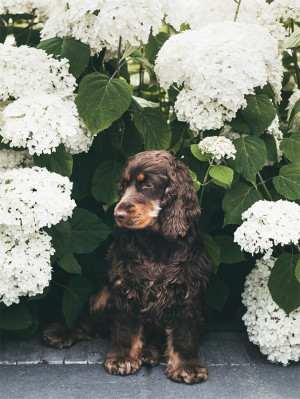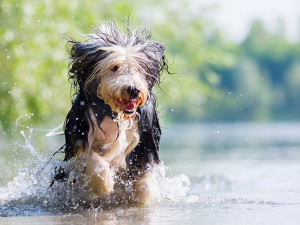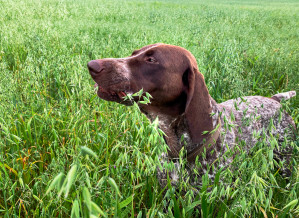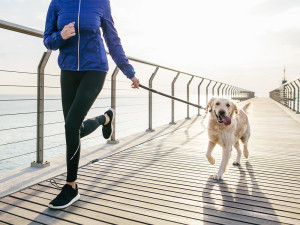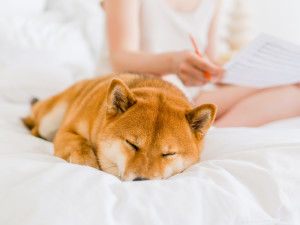The Dirt on Dog-Proofing Your Garden
Ten steps to a safe outdoor space – landscaper not required
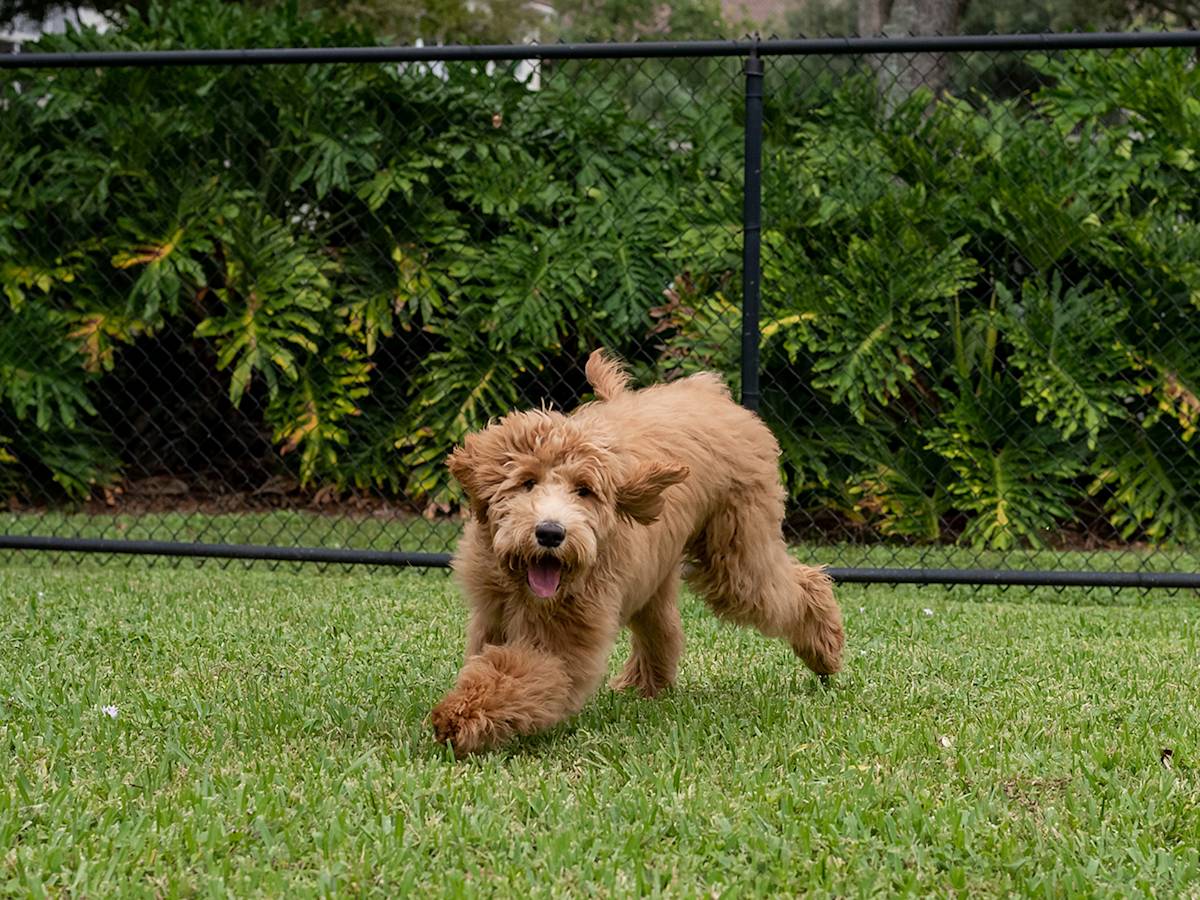
Share Article
Whether your garden is a lush botanical paradise or a weed-infested wasteland, your dog won’t know the difference. It’s their very own haven for rolling around in the dirt, patrolling for squirrels and pooing literally everywhere. It’s likely more hygienic than the dust bowl that is the local park, but lawn chemicals, toxic plants and other unexpected hazards can transform your summery outdoor space into a danger zone for your dog. Read this before you go finding your green thumb.
1. Consider your dog’s natural tendencies
Before you get to work, it’s a good idea to read up on your dog’s breed (if you know it). All breeds have their own quirks, and that can impact your approach. “Some breeds are more prone to destructive behaviour, while others are known for being escape artists, like huskies,” explains Dr Susannah Teran, DVM. “Understanding the breed can help identify potential challenges. For example, a Shiba Inu is quite capable of climbing a fence, while a Dachshund is more likely to tunnel under one. So as a pet parent, you would make very different choices about how to secure your yard based on these tendencies.”
2. Make sure your plants are dog-friendly
Hydrangeas, daffodils and tulips are just a few of the numerous plants and flowers poisonous to dogs. Before you let your pup set foot in your garden, uproot any deemed toxic by the PDSA’s extensive poisonous plants list.opens in new tab Another thing to consider is allergies; many weeds, trees and grasses are common allergens to dogs. If you find your dog is itchy after romping around in the garden, a blood test can pinpoint environmental allergies.
3. Keep compost out of reach
Composting is great for the planet but not so much for your dog. As food or plant matter decays, it can produce a mould that’s poisonous to dogs. Even in trace amounts this mould can trigger tremors or seizures if consumed, so keep your compost bin safely out of your pet’s reach.
4. Use natural garden products
Before spraying weedkiller or scattering fertiliser, check the product label to make sure it’s safe for dogs. If you have no choice but to use a toxic pesticide, read the instructions to see how long you need to keep your dog away from the area before it’s safe to return. And when not in use, store those products in a shed that your dog can’t access.
5. Secure your garden with a fence
Even a well-trained dog is at risk of wandering away from a garden if it’s not fully enclosed – especially scent hounds bred for tracking small game, like Beagles and Hounds. If you already have a physical fence, walk the perimeter to make sure there aren’t any holes big enough for your dog to squeeze through. Also be sure to repair any loose boards or reinforce the barrier with chicken wire.
If you’re shopping for a new dog fence, certified dog trainer Lisa Plymale suggests, “Solid fencing that a dog can’t see through is preferable. For one, it’s very secure. And by blocking visibility, it will help prevent your dog from developing unwanted behaviours, such as barking or charging the fence whenever a person or another dog goes by. You also want to make sure the fence is tall enough that your dog can’t jump over and low enough to the ground that they aren’t tempted to dig under.”
And don’t buy into the belief that an electric fence will keep your dog safe. The ‘positive punishment’ (repeated shocks by an E-collar) it takes for a dog to learn where the property line ends isn’t even a guarantee: some dogs will still fly past the boundary in a state of adrenaline in hot pursuit of a squirrel, then will be wary of coming home once they calm down (and remember the shock).
6. Tidy up your garden
“Left to their own devices, dogs will chew on a wide variety of things,” says Plymale. “That includes rocks, bark, hoses or even the siding on the house. The more you can do to clean up the area where they spend time, the better.” In addition to putting away potential hazards like gardening tools or kids’ toys, you should regularly pick up garden debris. Fallen fruit, sticks, seeds and leaves can all be harmful to your dog if they ingest enough of them. And the pits and seeds of stone fruits (cherries, plums, peaches) contain cyanide.
7. Practice pool safety
If you have a pool (jealous), you also have a few special considerations for your dog. Chlorine and other chemicals can be harmful to dogs if they drink it – and to some dogs, a pool is just a giant water bowl. Fencing the pool with a secure dog gate is the best way to keep them safe. Even the best swimmer is at risk of drowning or water intoxication if they can’t locate the steps to climb out.
8. Secure your balcony
Balconies present a unique danger: clearing the railing. Knowing your dog’s athleticism is a start. “Some dogs are more prone than others to chase,” says Dr Teran. “If you know your dog can’t resist going after a pigeon, then a balcony may not be a safe place for them. If your dog does spend time out there, make sure you put a barrier in place that prevents them from going overboard.”
9. Avoid standing water
Standing water is a breeding ground for mosquitoes – literally, they lay their eggs in it. As if you needed another reason to deter mosquitoes, they can transmit heartworm, which is fatal if left untreated in dogs. So be sure to capsize any pots collecting water and level your garden to allow rainwater to run off. If you live in a city, rodents are carriers of leptospirosis, an infection most commonly found in contaminated water. Leptospirosis is considered a core vaccine in the UK, but vaccines are not 100% effective against all strains.
10. When in doubt, supervise
Despite your best efforts, it’s not possible to fully dog-proof a garden: you can’t prevent tree limbs from falling or neighbourhood critters from leaving behind found objects. Ideally, when your pup is outside for more than a few minutes, you should be close enough to keep an eye on them. Besides, they want to hang out with you.

Kate Sheofsky
Kate Sheofsky hails from San Francisco, where she developed a love of writing, Giants baseball, and houses she can’t afford. She currently lives in Portland, OR, and works as a freelance writer and content strategist. When not typing away on her laptop, she enjoys tooling around the city with her two rescue pups searching for tasty food and sunny patios.
Related articles
![Kurzhaar's dog eats grass, oats, happy puppy playing in the meadow]()
Why Do Dogs Eat Grass?
When to worry about your pup’s grass consumption (and when it’s not a problem)
![A dog running with a woman on a pier.]()
8 Questions to Ask Yourself When Choosing a Dog Breed
Find out which dog breed is right for your lifestyle
![Sad boxer rests on owners lap, dog doesn't want to be touched]()
Don’t Ignore These 9 Behavioural Signs That Your Dog Is in Pain
Animal behaviourist Karen B London breaks down the silent ways your pet is trying to tell you they’re hurting
![Shiba inu dog sleeping in bed]()
My Dog Sleeps All Day – Is that Normal?
Dogs need more sleep than humans. Here’s how much is healthy

